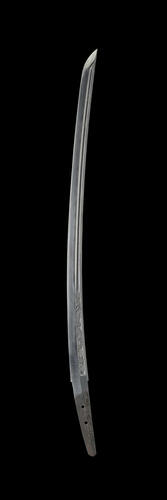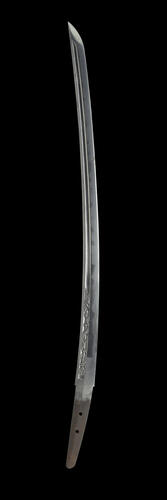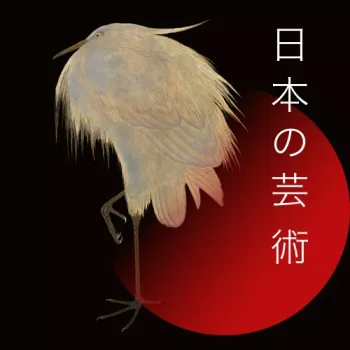Short sword (koshigatana) and scabbard blade, c.1550; mount 1650-1750
Steel, lacquered wood, shakudō, copper, gold leaf, silver | 4.3 cm (Width) x 4.6 cm (Depth); 79.1 cm (Length) (whole object) | RCIN 72783

Hirotsugu (active 1550)
Short sword (koshigatana) and scabbard blade, c.1550; mount 1650-1750

Hirotsugu (active 1550)
Short sword (koshigatana) and scabbard blade, c.1550; mount 1650-1750

Hirotsugu (active 1550)
Short sword (koshigatana) and scabbard blade, c.1550; mount 1650-1750

Hirotsugu (active 1550)
Short sword (koshigatana) and scabbard blade, c.1550; mount 1650-1750




-
The presentation of this sword to the Prince Regent in 1813 may be the earliest documented arrival of a Japanese blade in Britain. It was given by James Duff, 4th Earl Fife (1776–1857) on 23 April that year and subsequently displayed in the Armoury at Carlton House. Duff had fought in the Napoleonic Wars in Spain between 1808 and 1811, and may have acquired the sword there, for it was originally thought to be ‘A Curious Old Sword of one of the Moorish Kings of Spain.’
Between 1853 and 1855 it was photographed by Charles Thurston Thompson (1816–68), who went on to become the South Kensington Museum’s first official photographer. By this date the sword was known to be Japanese, and it may have been an appealing subject because of its ‘exotic’ workmanship. One of the resulting prints was included in an album of photographs belonging to Prince Albert that showed arms and armour at Windsor Castle (RCIN 2369573).
There are few remaining forging details on the blade but the elegant curvature and the groove (hi) near the upper edge all indicate good workmanship. There were several smiths who used the signature Hirotsugu, but this is most likely to be the one working in Sōshū (Sagami) Province (part of modern-day Kanagawa) around 1550. The blade is decorated on both sides with a carving (horimono) of a dragon wrapped around a Buddhist ritual sword (ken). The tang (nakago) is pierced with two holes indicating that it has been remounted on at least one occasion. It is now mounted as a short sword with no hand guard (koshigatana) in a dark brown, perhaps once black, lacquered scabbard.
The decoration of the fittings suggests that the sword was mounted for the export market. In the seventeenth and eighteenth centuries, a style of metalwork known as sawasa was produced for the Dutch East India Company in and around Nagasaki and, following Japan’s closed country (sakoku) edicts, from around 1639 by exiled Japanese craftsmen working in Batavia, where the market for sawasa was a profitable one. The idea of sawasa was that objects made from a copper alloy were given gilt relief decoration with black lacquered highlights to achieve the appearance of shakudō, but at a much cheaper price. The extensive metalwork here resembles shakudō, but is likely to be sawasa with highlights in gold and silver. The ground is covered with fine punch marks in a pattern resembling fish roe (nanako), although the punch marks are not completely uniform. The wooden hilt is covered on each side with panels of copper, hammered in imitation of ray skin and overlaid with gold leaf; the metalwork which covers this simulates silk braids. Overall, the fittings are incredibly detailed and seem to be the work of several craftsmen. The scabbard has a slot for a side-knife (kogatana) which is now missing.
The decorative scheme includes discreet paulownia leaves in relief, a motif normally reserved for high-ranking samurai and aristocrats. Other relief elements include phoenixes, wild boars, birds of various types, flowers and grasses, cherry blossom, pine, horses, long-tailed squirrels, deer, goats, chickens, wasps, dragonflies, monkeys, cranes, ducks, fish and butterflies. The attention to detail and the extensive decoration create an impressive overall effect.
Text adapted from Japan: Courts and Culture (2020)Provenance
Presented to George IV when Prince Regent by James Duff, Earl of Fife on 23 April 1813 and subsequently displayed in the Armoury at Carlton House. Photographed at the South Kensington Museum by Charles Thurston Thompson in 1856 with RCIN 67469. Sent from Windsor Castle for exhibition at The Japan-British Exhibition at White City, London, in 1910.
-
Creator(s)
(nationality)Acquirer(s)









